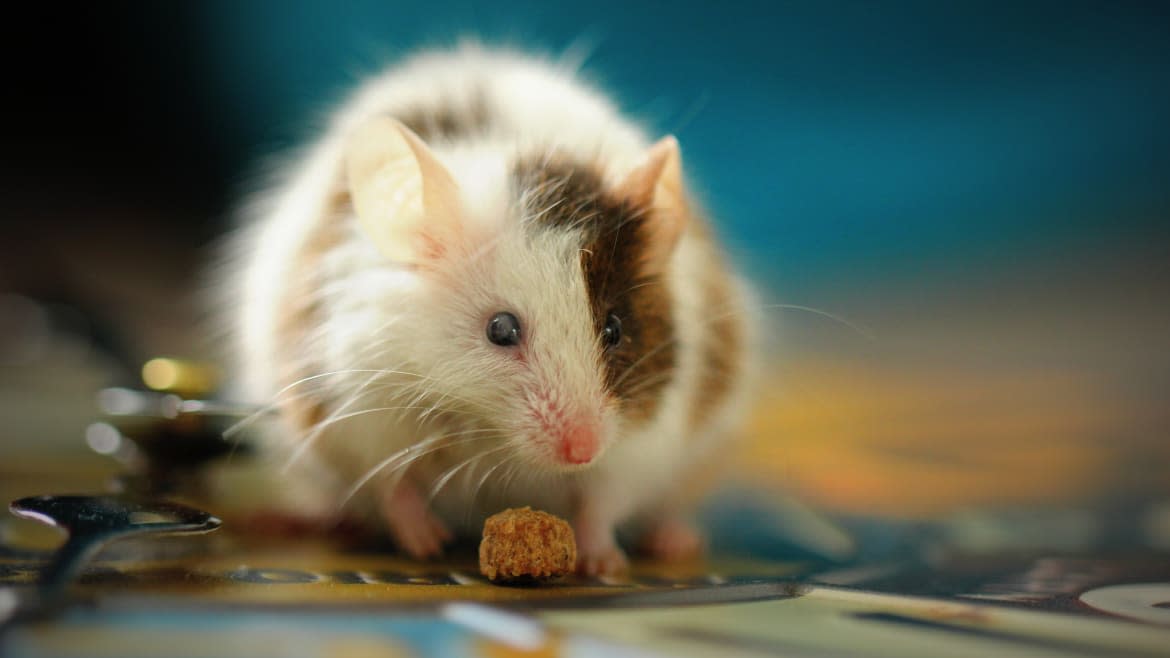Mice Playing VR Games Reveal Secrets of Long-Term Memory

While the metaverse seems to be imploding in places like (ironically enough) Meta, it seems as though it might be gaining steam from an unexpected user base: mice. Or, at least, laboratory mice being used in scientific experiments.
In a new study published Thursday in the journal Cell, neuroscientists from Rockefeller University in New York trained a group of mice how to play VR games in order to study their memory. Not only were the creatures able to learn how to successfully play, but their mad gaming skills might have also revealed the ways in which long-term memory is stored in the brain.
Unfortunately, the mice didn’t play any games popular with other animals like Doom or Pokemon. Instead, the study’s authors created a digital maze for the creatures to navigate. Instead of the mice being forced to wear a dorky miniaturized headset a la Meta’s Oculus, the VR maze was projected on a screen in front of the mice while they ran around on a styrofoam ball.
As the mice traversed the maze, they would encounter different stimuli like sounds, smells, and sights. Like any good game, this one had multiple endings. In the best ending, the player mouse could arrive at unlimited sugar water it could drink from a spout. In the mediocre ending, it could get just a few drops of the sugary water reward. And in the worst ending, it could get a lousy puff of air blown in its face.
“We structured the virtual reality tasks so that they required a lot of engagement from the mouse in order to start the trial, run through the mazes, and get the rewards,” Josue Regalado, a neuroscientist at Rockefeller University and co-author of the study, said in a statement. “The more explicit and cognitive the task, the more we’re able to look at how the different brain regions are engaged.”
The stimulus allowed the mice to learn the maze over the course of their attempts. Eventually, they would anticipate either the sugar water reward or the puff of air by running faster towards it or slowing down to brace themselves.
As they played, the mice’s brains were also hooked up to a new and highly advanced imaging device that utilizes fiber optic cables and lasers that allowed the researchers to observe their neural activity—as well as interfere with certain regions of the brain.
What This VR Pole-Dancer Wants You To Know About the Metaverse
For example, when the researchers used lasers to inhibit the mice’s hippocampus as they navigated the maze, the creatures did far worse because both their long and short term memory were impacted. When they did the same to a region called the anterior thalamus, the team discovered that the mice’s short term memory remained—but wouldn’t be able to commit information to their long-term memories.
However, when the anterior thalamus was stimulated with the lasers, the mice’s ability to commit information to long-term storage was enhanced. Specifically, the mice could better remember the “okay ending” of the game where they only received a few drops of sugar water. This revealed that the anterior thalamus actually plays an important role in long-term memory formation and storage.
“We’ve identified a circuit in the brain that is important for identifying which memories are important and how they are filtered into longer-term storage,” Andrew Toader, another neuroscientist at Rockefeller and co-author of the study, said in a statement. “As soon as the mice begin learning a task, the thalamus is performing this selection process and choosing which memories will go on to be stabilized in the cortex long-term.”
Think of it like your favorite band. You probably couldn’t name exactly all the times you listened to your favorite band on Spotify or Apple Music this past month. However, you can say exactly when the last time you saw them in concert was and how that made you feel. The experience was more rewarding—and scientists believe that this might play a big role in how the anterior thalamus treats that memory.
An Injectable Gel Could Zap Your Brain to Treat Alzheimer’s
“We think something like adrenaline or dopamine might be helping the thalamus to say, ‘okay, this memory is important to me, that’s not as important,’” Priya Rajasethupathy, a neuroscientist at Rockefeller and co-author author of the study, said in a statement. “And we still don’t understand how punctuated or continuous the memory stabilization process is, whether it occurs in one or a few steps or evolves continuously over a lifetime.”
So beyond potential mice-based Twitch channels in the future, the research could lead to technologies or treatments for memory in people one day. Of course, more research is needed in human subjects to bear out whether or not the anterior thalamus has the same effects on human brains. But the study is a strong indicator that the region of the brain plays a massive role in the way we remember things long term.
Got a tip? Send it to The Daily Beast here
Get the Daily Beast's biggest scoops and scandals delivered right to your inbox. Sign up now.
Stay informed and gain unlimited access to the Daily Beast's unmatched reporting. Subscribe now.

